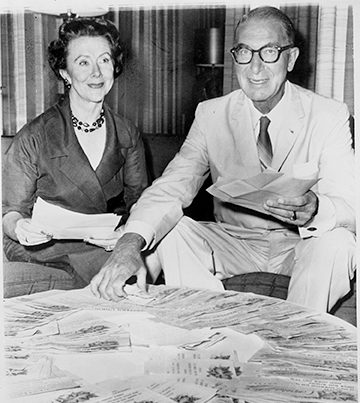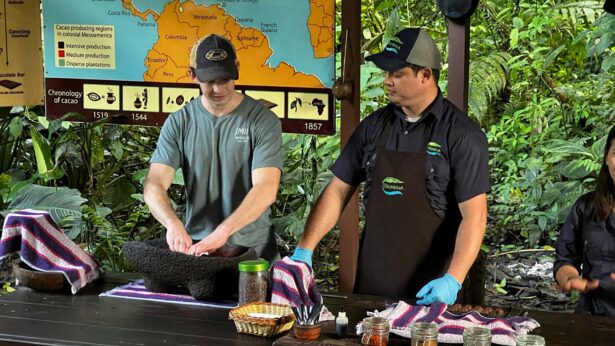
During the Democratic primary campaign for U.S. Senate in 1948, Memphis politician Ed Crump accused Estes Kefauver of being sympathetic to communists and compared him to a deceitful raccoon. In reply on national television, Kefauver donned a coonskin cap, and it became his trademark look throughout his political life.
Kefauver played football at UT Knoxville and served as editor of the campus newspaper and president of the student body. He completed a bachelor’s degree in 1924, followed by graduating from Yale University Law School in 1927. After practicing law in Chattanooga, he was elected in 1939 to the first of five terms in the U.S. House of Representatives.
In 1948, Tennesseans elected him to the U.S. Senate, where he led the Kefauver Committee—a series of hearings that introduced organized crime figures commonly known as the mafia to the general public. During the winter of 1951—to expose the breadth of organized crime in America—Kefauver interviewed gamblers, criminals, political figures and crooked police officers on national television before an estimated 30 million viewing audience. TIME magazine featured him on its cover, and he co-authored the book Crime in America.
Kefauver sought the Democratic Party’s nomination to run for president in 1952—unsuccessfully. In 1956, he again tried running for president, again losing the Democratic Party nomination to Adlai Stevenson. Stevenson chose Kefauver as his running mate in an unsuccessful race against Dwight D. Eisenhower.
Kefauver continued his work in the Senate. In 1962, he co-authored the Kefauver-Harris Drug Control Act, which required drug companies to reveal side effects and effectiveness to doctors.
Kefauver died in 1963 at the age of 60.


